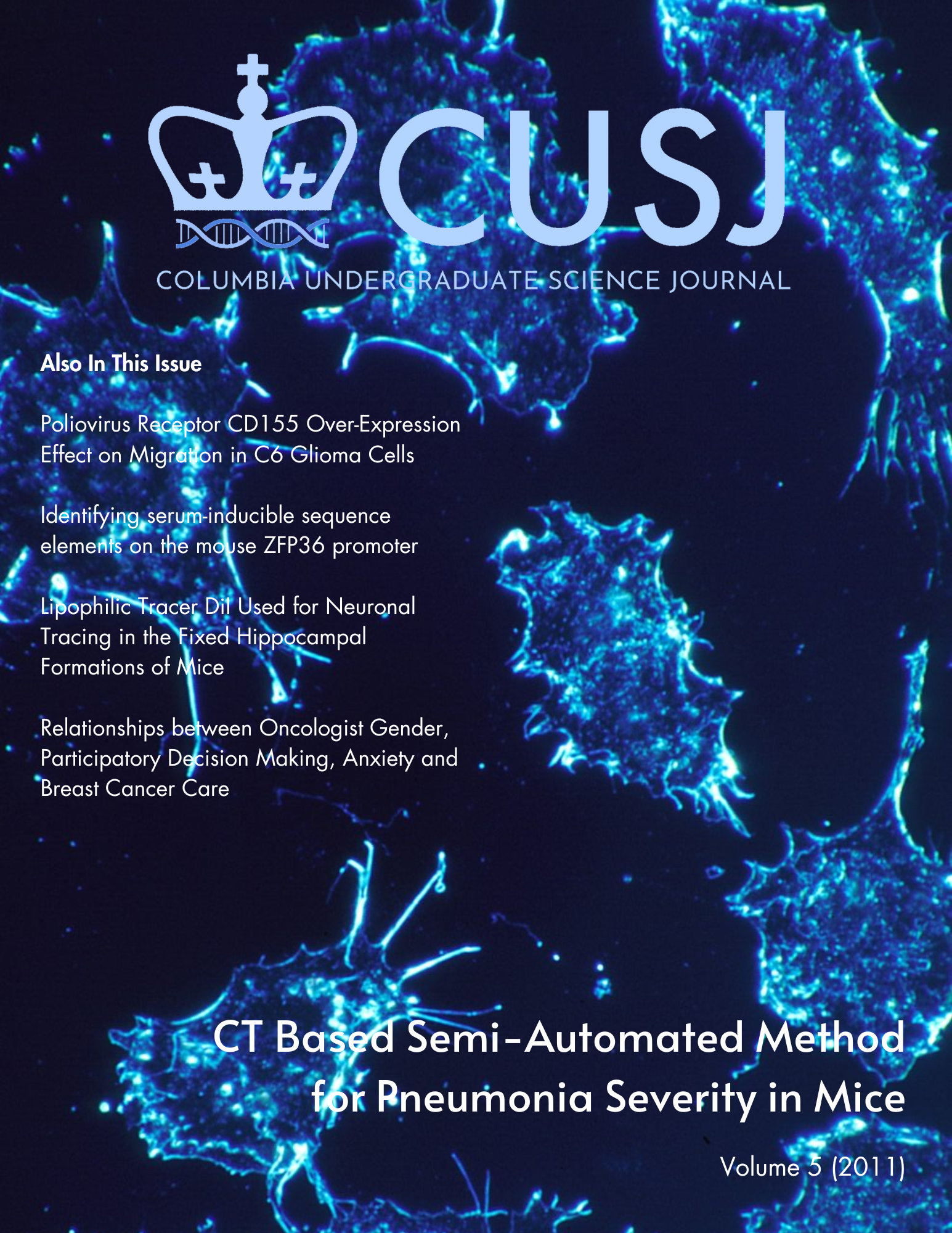Abstract
Cell migration plays a key role in brain cancer invasion, an early step in metastasis, and proteins that regulate migration are often up-regulated in tumor cells. The poliovirus receptor CD155 has recently been shown to affect migration levels of select malignant glioma strains, fueling the exploration of treating brain cancer with oncolytic virus recombinants. In the beginning phase of experimentation, we analyzed the migratory behavior of control C6 gliomas through two rounds of transfilter assays. In order to explore the function of CD155 in glioma migration, we then conducted two over-expression experiments with the use of a full-length cDNA expression vector and compared the resulting migration rates to control data. We found that an average of 304.25 control cells cross our transfilters after 5.5 hours, and an average of 354.5 cells transfected with the PVR expression vector. Our results reflected a 16.5% increase in cell migration due to an increased presence of the protein CD155. In order to confirm that CD155 was expressed in the rat C6s, we subsequently conducted two Western blots: one comparing control C6s and transfected C6s, and the other running control C6s next to a human U87 glioma control cell line. The blots establish that CD155 is indeed present in both of these human and rat strains of glioma, and that our over-expression was successful. Key words: Glioblastoma multiforme; tumor migration; poliovirus receptor CD155; protein over-expression.

